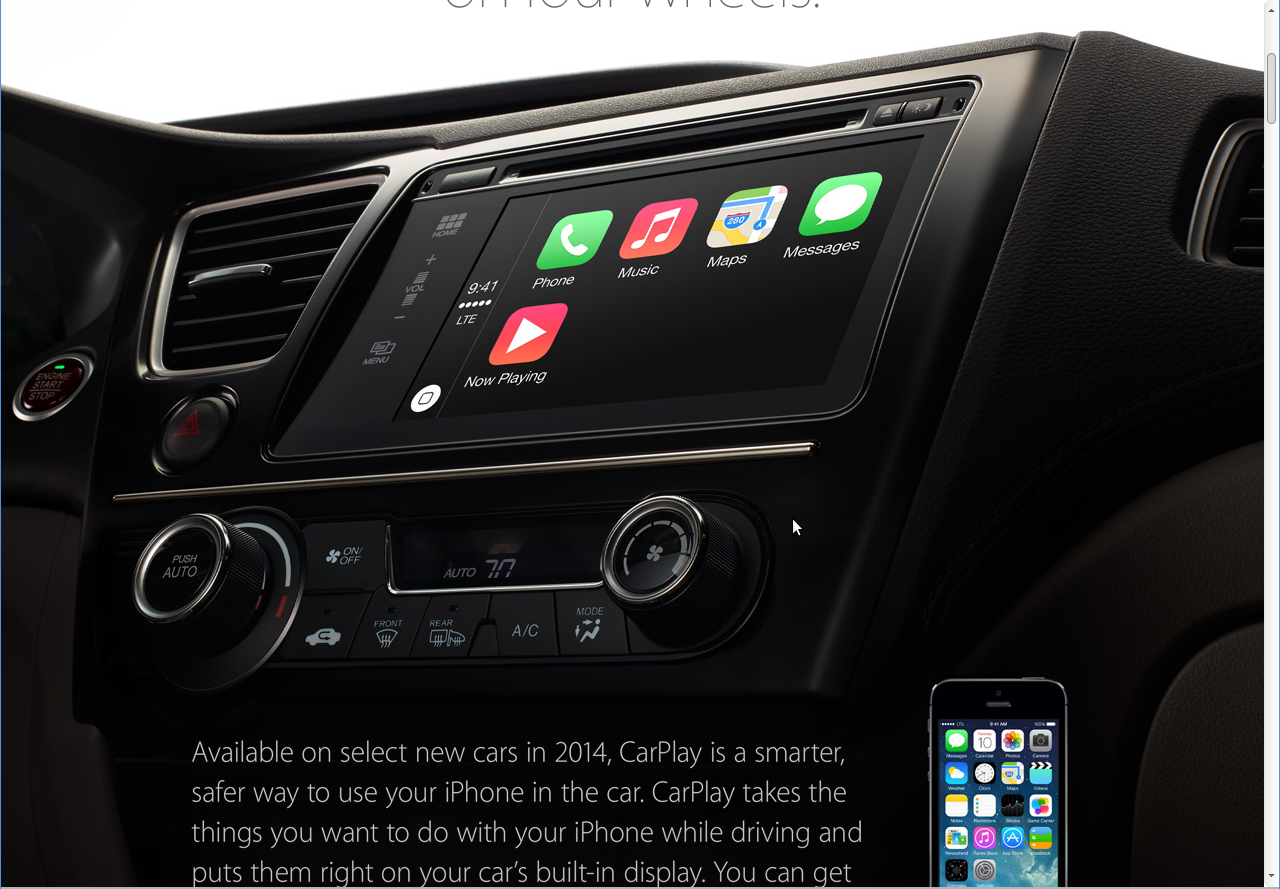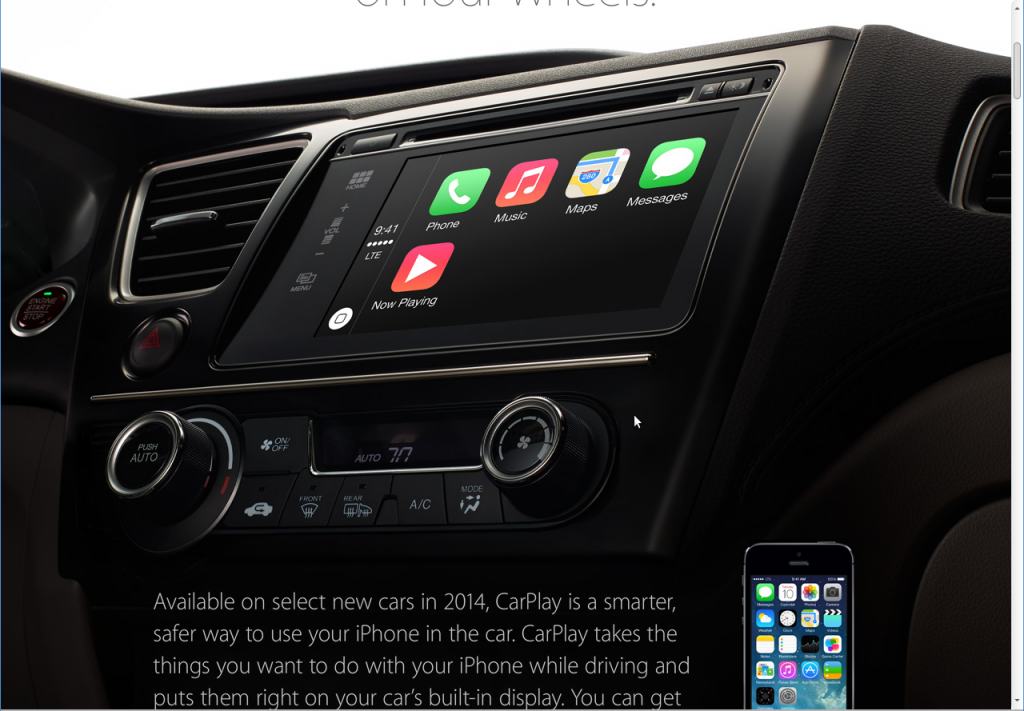News
Rumors of Apple Self-Driving Car Reignite after Secret Discussion with Test Facility
Will an Apple Car enter production soon? The Guardian says yes, but others are skeptical. It may have begun testing at a secret location in Concord, CA.

Rumors of a self-driving electric car by Apple are becoming more real these days, especially after the latest document obtained by The Guardian giving signs that Apple has made arrangements with GoMentum Station, a secure and gated facility with 20 miles of paved roads, bridges and underpasses, to utilize their space.
The former World War II naval base is located 40 miles north of Silicon Valley and guarded by the military, making it, officials claim, “the largest secure test facility in the world” for the “testing, validation, and commercialization of connected vehicle (CV) applications and autonomous vehicles (AV) technologies …” Mercedes-Benz and Honda have already carried out experiments with self-driving cars behind its barbed wire fences.
Thanks to a Freedom of Information request filed by The Guardian, we know that in May, engineers from Apple’s secretive Special Project group met with officials from GoMentum Station, after Apple engineer Frank Fearon wrote to the facility, saying, “We would … like to get an understanding of timing and availability for the space, and how we would need to coordinate around other parties who would be using [it].”
“We had to sign a non-disclosure agreement with Apple,” says Randy Iwasaki, executive director of the Contra Costa Transportation Authority, owner of GoMentum Station. He says, “We can’t tell you anything other than they’ve come in and they’re interested. There’s not a lot of vacant space in the Valley if you want to do testing in a secure location. We’re close enough that companies can bring their vehicles north, store them in the Concord area and bring their software and hardware engineers up.”
Apple calls its car making venture Project Titan. The Guardian says it is housed in a nondescript building in Sunnyvale, California, about 4 miles from Apple’s new headquarters in Cupertino. The building was leased in 2014 and subsequently modified by Apple to include several labs and workshop spaces, as well as beefed-up security and access card readers, according to information filed in city permits.
In May, Apple senior vice-president Jeff Williams called a car “the ultimate mobile device” and said that Apple was “exploring a lot of different markets [in which] we think we can make a huge amount of difference”.
The Guardian story appeared on August 14. The next day, the editors of The Verge pooh poohed it, saying, “We still don’t have the smoking gun there will be an actual Apple-branded car on the streets that you and I can buy directly from Apple, just as you would a Tesla. There are a number of other possibilities that are still in the running — Apple could want to build a car platform, for instance, just as Google seems to be doing, without making or selling cars itself. Or it could be developing technologies that it can license and sell to existing automakers.”
Skepticism from The Verge centers on the fact that it normally takes 5 years for an established car company to bring an entirely new car to market. It thinks for a company like Apple, which has never built a car before, the time could be a lot longer.
Rumors about an Apple Car only began to surface a year or so ago and consist mostly of reports that Apple is busy recruiting engineers from Tesla and the former A123 battery company. The Verge thinks that if Apple is working on building a car, it will be 2020 at the earliest before it goes into production.
>>>>> MUST SEE: [VIDEO] Hilarious ‘Apple Car’ Parody
Google, Tesla, Volkswagen, Mercedes-Benz and several other car makers have been issued permits by the California department of motor vehicles to test self-driving cars on the state’s public roads. But that process requires disclosing technical and commercial details, something that the notoriously secretive Apple might not want.
Tesla apparently wanted key personnel to tour GoMentum Station in April, but armed soldiers at the base refused entry to foreign born workers and a manager who would not divulge his social security number. “At this point, I’ll retract our interest in this test site until the process is worked out,” the manager said in an email to GoMentum Station’s Jack Hall, according to The Guardian.
No company on Earth is as secretive about its future plans as Apple. The only thing we know for sure about the supposed Apple Car is that we don’t know very much about it at all.

Elon Musk
Elon Musk and Tesla AI Director share insights after empty driver seat Robotaxi rides
The executives’ unoccupied tests hint at the rapid progress of Tesla’s unsupervised Robotaxi efforts.

Tesla CEO Elon Musk and AI Director Ashok Elluswamy celebrated Christmas Eve by sharing personal experiences with Robotaxi vehicles that had no safety monitor or occupant in the driver’s seat. Musk described the system’s “perfect driving” around Austin, while Elluswamy posted video from the back seat, calling it “an amazing experience.”
The executives’ unoccupied tests hint at the rapid progress of Tesla’s unsupervised Robotaxi efforts.
Elon and Ashok’s firsthand Robotaxi insights
Prior to Musk and the Tesla AI Director’s posts, sightings of unmanned Teslas navigating public roads were widely shared on social media. One such vehicle was spotted in Austin, Texas, which Elon Musk acknowleged by stating that “Testing is underway with no occupants in the car.”
Based on his Christmas Eve post, Musk seemed to have tested an unmanned Tesla himself. “A Tesla with no safety monitor in the car and me sitting in the passenger seat took me all around Austin on Sunday with perfect driving,” Musk wrote in his post.
Elluswamy responded with a 2-minute video showing himself in the rear of an unmanned Tesla. The video featured the vehicle’s empty front seats, as well as its smooth handling through real-world traffic. He captioned his video with the words, “It’s an amazing experience!”
Towards Unsupervised operations
During an xAI Hackathon earlier this month, Elon Musk mentioned that Tesla owed be removing Safety Monitors from its Robotaxis in Austin in just three weeks. “Unsupervised is pretty much solved at this point. So there will be Tesla Robotaxis operating in Austin with no one in them. Not even anyone in the passenger seat in about three weeks,” he said. Musk echoed similar estimates at the 2025 Annual Shareholder Meeting and the Q3 2025 earnings call.
Considering the insights that were posted Musk and Elluswamy, it does appear that Tesla is working hard towards operating its Robotaxis with no safety monitors. This is quite impressive considering that the service was launched just earlier this year.
Elon Musk
Starlink passes 9 million active customers just weeks after hitting 8 million
The milestone highlights the accelerating growth of Starlink, which has now been adding over 20,000 new users per day.

SpaceX’s Starlink satellite internet service has continued its rapid global expansion, surpassing 9 million active customers just weeks after crossing the 8 million mark.
The milestone highlights the accelerating growth of Starlink, which has now been adding over 20,000 new users per day.
9 million customers
In a post on X, SpaceX stated that Starlink now serves over 9 million active users across 155 countries, territories, and markets. The company reached 8 million customers in early November, meaning it added roughly 1 million subscribers in under seven weeks, or about 21,275 new users on average per day.
“Starlink is connecting more than 9M active customers with high-speed internet across 155 countries, territories, and many other markets,” Starlink wrote in a post on its official X account. SpaceX President Gwynne Shotwell also celebrated the milestone on X. “A huge thank you to all of our customers and congrats to the Starlink team for such an incredible product,” she wrote.
That growth rate reflects both rising demand for broadband in underserved regions and Starlink’s expanding satellite constellation, which now includes more than 9,000 low-Earth-orbit satellites designed to deliver high-speed, low-latency internet worldwide.
Starlink’s momentum
Starlink’s momentum has been building up. SpaceX reported 4.6 million Starlink customers in December 2024, followed by 7 million by August 2025, and 8 million customers in November. Independent data also suggests Starlink usage is rising sharply, with Cloudflare reporting that global web traffic from Starlink users more than doubled in 2025, as noted in an Insider report.
Starlink’s momentum is increasingly tied to SpaceX’s broader financial outlook. Elon Musk has said the satellite network is “by far” the company’s largest revenue driver, and reports suggest SpaceX may be positioning itself for an initial public offering as soon as next year, with valuations estimated as high as $1.5 trillion. Musk has also suggested in the past that Starlink could have its own IPO in the future.
News
NVIDIA Director of Robotics: Tesla FSD v14 is the first AI to pass the “Physical Turing Test”
After testing FSD v14, Fan stated that his experience with FSD felt magical at first, but it soon started to feel like a routine.

NVIDIA Director of Robotics Jim Fan has praised Tesla’s Full Self-Driving (Supervised) v14 as the first AI to pass what he described as a “Physical Turing Test.”
After testing FSD v14, Fan stated that his experience with FSD felt magical at first, but it soon started to feel like a routine. And just like smartphones today, removing it now would “actively hurt.”
Jim Fan’s hands-on FSD v14 impressions
Fan, a leading researcher in embodied AI who is currently solving Physical AI at NVIDIA and spearheading the company’s Project GR00T initiative, noted that he actually was late to the Tesla game. He was, however, one of the first to try out FSD v14.
“I was very late to own a Tesla but among the earliest to try out FSD v14. It’s perhaps the first time I experience an AI that passes the Physical Turing Test: after a long day at work, you press a button, lay back, and couldn’t tell if a neural net or a human drove you home,” Fan wrote in a post on X.
Fan added: “Despite knowing exactly how robot learning works, I still find it magical watching the steering wheel turn by itself. First it feels surreal, next it becomes routine. Then, like the smartphone, taking it away actively hurts. This is how humanity gets rewired and glued to god-like technologies.”
The Physical Turing Test
The original Turing Test was conceived by Alan Turing in 1950, and it was aimed at determining if a machine could exhibit behavior that is equivalent to or indistinguishable from a human. By focusing on text-based conversations, the original Turing Test set a high bar for natural language processing and machine learning.
This test has been passed by today’s large language models. However, the capability to converse in a humanlike manner is a completely different challenge from performing real-world problem-solving or physical interactions. Thus, Fan introduced the Physical Turing Test, which challenges AI systems to demonstrate intelligence through physical actions.
Based on Fan’s comments, Tesla has demonstrated these intelligent physical actions with FSD v14. Elon Musk agreed with the NVIDIA executive, stating in a post on X that with FSD v14, “you can sense the sentience maturing.” Musk also praised Tesla AI, calling it the best “real-world AI” today.









